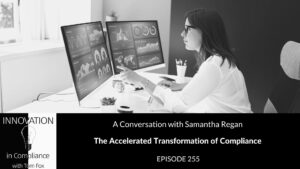Over this series, I am reviewing the corruption enforcement action Involving the company formerly known as Chrysler Group LLC, now FCA US LLC (Chrysler or the company herein) which was criminally sentenced to pay a fine of over $96 million and a forfeiture money judgment over $203 million. These amounts were above a previous civil penalty of $310 million. All of this was for designing a vehicle emissions system for the company’s Jeep Grand Cherokee and Ram 1500 that would evade federal emissions standards for diesel vehicles and then lying about it to federal authorities. It was a different type of corruption from a Foreign Corrupt Practices Act (FCPA) enforcement action but corruption, nonetheless. Today, I want to consider some of the lessons for the anti-corruption compliance professional.
The actions by the company are instructive for what not to do in any corruption investigation. The Plea Agreement specified that the company did not receive credit for self-disclosure as it did not self-disclose its criminal conduct or fraud. The company did receive some cooperation credit for cooperating during the scope of the investigation but did not receive any credit for failures in both taking timely remedial action and for failing to discipline senior executives who were involved in or had knowledge of the criminal action and fraud. (Recall that one executive involved directly in the fraud was with the company until 2020.)
All these actions were very costly to the company in terms of how it was evaluated under the US Sentencing Guidelines. Under Section 8(C)2.5(g)(2) a company can receive credit of up to five (5) points for cooperating in the investigation and affirmatively accepting responsibility for it’s conduct. The company only received a two (2) point discount. Since the Plea Agreement specified the company did cooperate in the investigation, it clearly did not accept responsibility for its conduct. The lack of those three points in discount cost the company somewhere in the estimated range of $20 to $30 million in additional fines and penalties.
The Plea Agreement also specified for the first time the Monaco Doctrine of evaluating past conduct as a part of the overall evaluation of the company. The Plea Agreement detailed that the company had a prior criminal conviction for bribery and corruption under the National Labor Relations Act (NLRA) for bribing union officials. However, it is not clear how that worked into the overall fine and penalty except to note that the company paid the maximum under the US Sentencing Guidelines, after credit for the civil penalty.
Additionally, while there is no requirement for a monitor in this resolution of the criminal action, there was a such a requirement in the Consent Decree from the civil action. It mandated an Independent Compliance Auditor for a period of three years from the resolution of the civil matter, which was May 2019.
Lessons Learned
There are multiple lessons for the anti-corruption compliance professional from this enforcement action. Obviously, the need to engage in robust remediation for the matter at issue and your compliance program is critical. Moreover, and once again the Department of Justice (DOJ) criticized a company for tardiness in disciplining those who were involved in the fraud or those who were aware of it. As I noted in Part 1, multiple former company employees were criminally indicted for their conduct in this sordid affair. Yet some of them were with the company until 2019 and 2020 and not all were terminated, some left the company in voluntary separations, which sounds suspiciously like retirements. Such actions could save your organization literally millions of dollars.
One of the clearest, which was not stated in any of the resolution documents, was that every Chief Compliance Officer (CCO) needs to read the newspapers and stay abreast of current events in their industry. It was September 2015 that the Volkswagen (VW) emissions-testing scandal became public. It was by far the largest scandal in emissions-testing and cost VW billions in investigative and remediation costs, fines, penalties, buy-backs, market share loss and reputational damages. To say that anyone at the company was not aware of it is to simply defy belief.
Beyond just the CCO, every Board member was no doubt aware of the VW emissions-testing scandal. Under the current state of the Caremark Doctrine, there may well be a duty to make an inquiry by the Board of auto manufacturers to senior management to investigate if they have been involved in similar conduct. Here we do not know how the scandal got to the attention of the DOJ, but it was clear from the Plea Agreement, it was not from self-disclosure. CCOs and Boards need to be much more proactive when competitors get into trouble about investigating similar products or services which could lead to criminal and civil fines and penalties.
This matter warrants consideration by every CCO in every US public and private company. Every CCO can also use the case as instruction and training for both senior management and their company Board of Directors.
Resources
DOJ Press Release
Information
Plea Agreement
Consent Decree from the civil action






